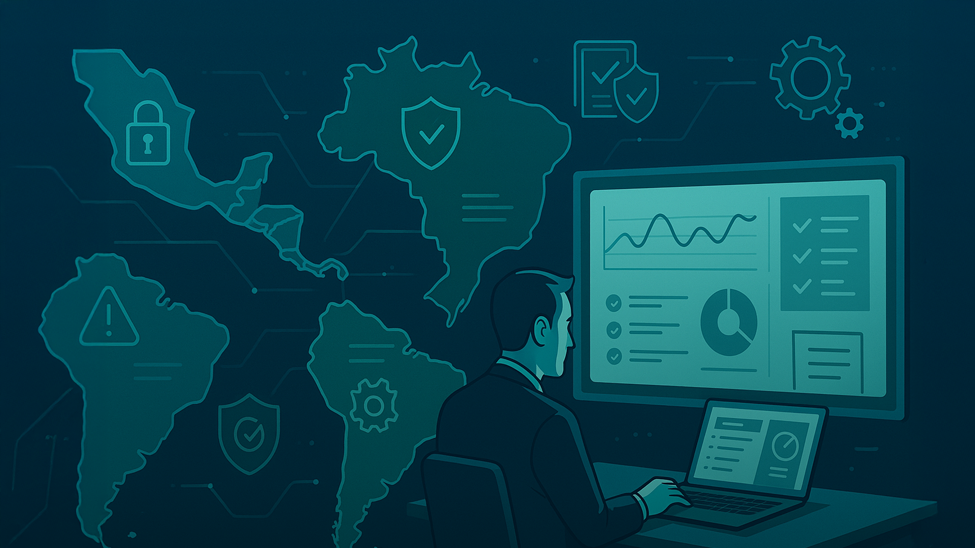Is the cybersecurity elephant keeping you up at night?
Cyber threats are on the rise. Close calls and near misses make it clear that an effective cybersecurity program is essential. But getting your arms around the cybersecurity elephant can be challenging. And “effective” protection is difficult to achieve, especially if you’re navigating the complexities of security with limited dedicated resources and knowledge.
If the responsibilities of protecting your organization are keeping you up at night, you are not alone. Keep reading to learn the top 3 issues IT and security leaders share – regardless of their company size – and a simple suggestion that can start you on the path to a more restful sleep.
1. Speed of change
Traditional network and application controls focused on protecting the data, users, and infrastructure that resided within the physical walls of an organization. But the pace of technology change has grown steadily since the early 2000s.
Today, digital initiatives and innovative technologies support modern business opportunities. They’ve even enabled organizations to adapt rapidly to shifts, such as the remote and hybrid work models driven by the COVID-19 pandemic. But these capabilities and the resulting extended infrastructure also add complexity, expand the attack surface, and introduce new security risks.
The resulting perimeterless infrastructure extends users and information assets well beyond the data center to the cloud, mobile, and remote and hybrid environments. Securing these environments, data assets, and users requires a baseline cybersecurity strategy and the implementation of equally innovative security technologies that can evolve to address emerging threats.
2. Limited visibility
One of the biggest barriers we hear from new customers is they “don’t know what they don’t know.” In other words, they lack a comprehensive view of the organization’s IT infrastructure, its data assets, and users.
The reasons are varied, but because lines of business (LOBs) require very specific systems and applications, their infrastructures can grow organically – and in silos. These LOBs may be using applications and storing data in applications that IT is not aware of (known as Shadow IT). Use of uninventoried and rogue apps can have serious security and compliance implications for the organization. Hackers have the potential to exploit them and remain undetected as they move into other areas of the organization’s infrastructure.
Departments frequently “secure” their LOB assets, however, this is usually an ad hoc process that can be inconsistent with broader corporate policies for user permissions and data protections. Worse, the department may rely on the security implemented by the cloud provider which may not align with the organization’s risk tolerance and compliance.
3. Critical impacts
Wondering why the visibility of all the organization’s systems, users, and data assets is so important? Because assets are not created equal. An unobstructed view of the organization’s infrastructure allows IT to prioritize which of the organization’s assets it needs to protect – based on its assessment of the asset’s risk and criticality to the business.Top priority must be paid to securing business-critical systems and applications that the organization relies on to:
- Deliver its services, produce products, and generate revenue
- Keep its users productive – regardless of whether they are in the office or remote
- House sensitive data whose inadvertent exposure could be costly to the organization’s brand, reputation, and bottom line – and/or to the data owners themselves (e.g., healthcare patients or customers).
Overcoming the obstacles to stronger security (and restful sleep)
When demand for securing your organization increases but your supporting resources stay the same, it’s time to work smarter, not harder.
The first step is to engage with business stakeholders across your organization to understand how they work and the systems and applications that support their day-to-day functions.
Ask them to identify their assets – in particular those that are most important to their productivity and essential to supporting the business. Guide these stakeholders to understand the potential impact of an attack on LOB assets and outline the best ways to protect them.
Bringing business stakeholders into the security conversation helps break down LOB silos, giving you better visibility into what needs protection and where security gaps exist. It also usually results in stakeholders taking ownership for consistently inventorying, maintaining, and securing their assets that make up the organization’s collective “crown jewels.”
Better visibility of these assets enables prioritization and allows you to focus your security efforts for greater impact. And it ensures that the security policies you establish are applied consistently to systems, user access, and data protections across your organization.
Tired of losing sleep? Watch our webinar to learn how Enveedo can help you evolve your cybersecurity program like a pro:
You May Also Like
These Related Stories

Incident Response Plan: Keys to success for companies with multiple teams involved

Staying Ahead of the Curve: Actionable Strategies for LATAM Compliance Success


No Comments Yet
Let us know what you think